What I read in 2019
Like in the last couple of years, I decided to look back on the year and reflect a bit about what I read. I ended up scaling back slightly on reading books that people recommended to me, and instead focused on reading books that were on my to-read-list for a while.
A habit I picked up on this year is to not force myself to finish a book if I really cannot get into it. There were two or three such books that I stopped reading after a few chapters. While I was hesitant to do this, the world has too many interesting books that one could read in the same time. The following list does not include the books I did not read fully since I feel like it would not be fair to write anything about them.
Foundation

I started reading some of Isaac Asimov’s short stories a few years ago and liked them a lot – especially The Last Question and Franchise. This year, I decided I should give his novels a read as well. In the end I chose the Foundation series, one of Asimov’s most popular pieces of work.
One of the central ideas of the series is that empires in our world last a very finite amount of time. At some point, they collapse and a time of chaos ensues. During that time, science stops progressing and a lot of knowledge is lost. This was, for example, the case with the Roman Empire and the subsequent Middle Ages.
Foundation takes place in a far future, where one huge empire rules the entire galaxy. Hari Seldon is a researcher at the forefront of a new science that can be used to predict major events in the future. While individual people act too probabilistically, large masses of people are more predictable. Since the galaxy is now inhabited by a huge number of people, Seldon can estimate with high probability how the empire is going to develop. He predicts that the empire is going to collapse in a few hundred years, and that thousands of years of civil wars without scientific progress are about to follow.
To ensure that scientific progress is slowed down as little as possible, he proposes the settlement of two new colonies, the foundations. These civilizations should exist for the sole purpose of preserving the world’s knowledge until the next empire forms. The rest of the book tells the fate of the first foundation and how it tries to survive in the chaos of the next two hundred years. I really liked the fundamental idea behind the book and how the story was told.
Foundation and Empire
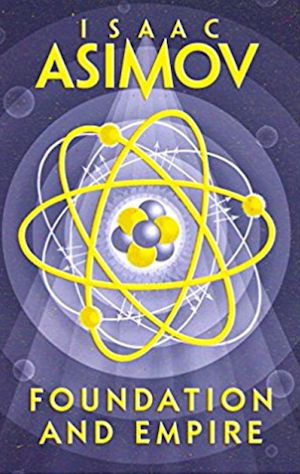
The second Foundation book is split into two parts. In the initial half, the first foundation is trying to establish itself against the old, falling empire. This part is rather similar to the first book.
The second half discusses events that were too unlikely to have been predicted, since they were caused by individuals. At this point the book becomes more exciting. It is the first time in the books that the reader cannot be certain about whether Hari Seldon planned for events.
While I generally enjoyed the Asimov’s writing style, I did notice that most of the characters were rather one-dimensional. However, because of the way the books are laid out, this is not a major issue. Since the story is concerned with the overall direction that humanity is moving in, there just seemed to be little room for complex individuals.
Second Foundation
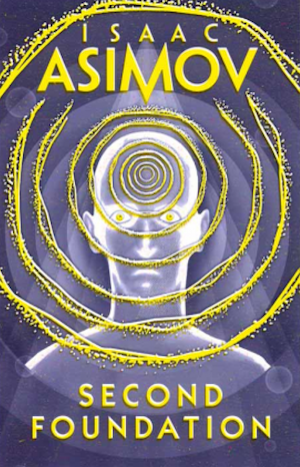
In the third book, and final book of the original trilogy, the focus shifts to the second foundation. Events pick up a few years from where the second book left off, but the same line of events is discussed. It is hard to talk about the third book in a series without spoiling the first two parts, so I am omitting a more thorough summary at this point.
All in all I really liked the Foundation trilogy. A lot of the ideas presented are really interesting and I enjoyed the way the stories were told. There are two prequels and two sequels to the original trilogy, so I might read those in the future.
I also noticed that Asimov made some fairly good predictions about the future. Even though the books are fairly old, he does predict a number of devices that exist today, for example a typewriter that automatically corrects typos. Interestingly, physical cash still seems to be a thing in the story, e.g. for machines that let you buy public transport tickets.
Do No Harm
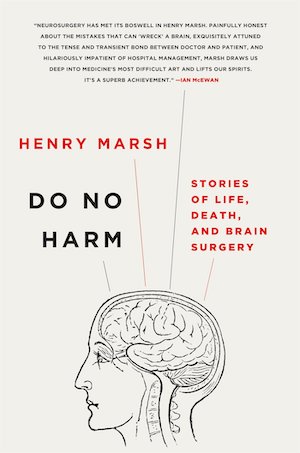
Do No Harm is the autobiographical book of a British neurosurgeon. Each chapter tells a story from his life, with most of them discussing specific medical cases. Other parts of the book talk about different events that happened in the author’s life.
I liked that the book seemed to be written in an incredibly honest way. For example, one of the chapters starts with a story about how an unnecessary fight caused him to be in an angry mood before a surgery. Later, he worries whether the operation did not go as well as it could have gone simply because he was in the wrong mood to maintain perfect focus.
Another interesting insight was how difficult it is to train new neurosurgeons. They have to operate on real patients to learn, but until they have enough practice, they will make more mistakes than experienced surgeons. However, if you do not give new surgeons the chance to learn in the real world, they can never get any better. It generally struck me as interesting that in this line of work there is a much higher cost attached to things like having an off-day or to training the next generation.
Game Theory: A Nontechnical Introduction
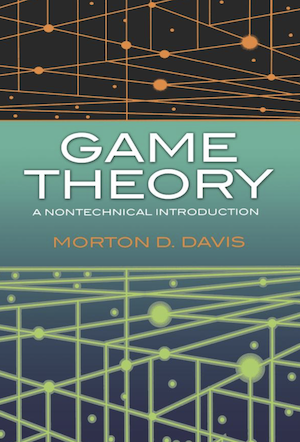
Game theory is the science of decision making. It can be used to mathematically formalize how strategies should be chosen, how voting power can be measured, or how players might cooperate. I was looking for a short introduction to the subject. In particular I wanted a book which would be faster to read than a textbook but still had mathematical rigor. After looking for such a book for quite a long time, I settled on Game Theory: A Nontechnical Introduction. It did not contain that much math but still seemed like the closest thing to what I was looking for.
Each chapter of the book starts with a set of exercises. The reader is asked try to solve them, before learning about the theories behind the problems in the rest of the chapter. This turned out to be a nice way start thinking about the ideas that were about to be discussed. However, the solutions were only presented at the end of each chapter. By that time, I had mostly forgotten about the problems again, so it did require some more time to work through the solutions.
In terms of topics, the book was well organized. However, the chapter structure seemed a bit odd, with the last two chapters taking up nearly all of the book. In general, I felt like the book was a great choice for learning about game theory, especially considering how unhappy I was with other books. Despite not being a difficult read, I ended up taking a lot of ideas away from it. I also noticed that after reading the book I now keep on seeing applications of game theory everywhere.
A Random Walk Down Wall Street
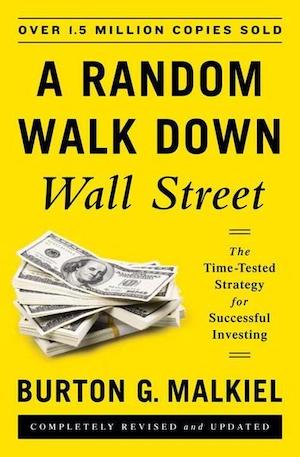
The first edition of A Random Walk Down Wall Street, from 1973, made the recommendation of very broadly investing into the market by using something like index funds. However, index funds did not exist at the time and were only subsequently created, partly as a reaction to the author’s ideas. Nowadays, ETFs enjoy great popularity and follow closely to what the first edition suggested ought to be created.
In a nutshell, the book is a primer to the world of investing and finance. It is split into four parts. The first two explain how people have historically lost a lot of money (e.g. in various bubbles) and what academia thinks about investing. The third part explains the techniques that people on Wall Street use and the last provides advice on what individuals should do.
I found the writing style to be superb and the book to be generally super interesting. It is one of the few books that I would recommend everybody should read at some point in their lives. My only criticism is that parts of the book, maybe 15%, are fairly US-specific. The rest of the book, however, is very generally applicable and the US parts are easy to skip.
Deep Work
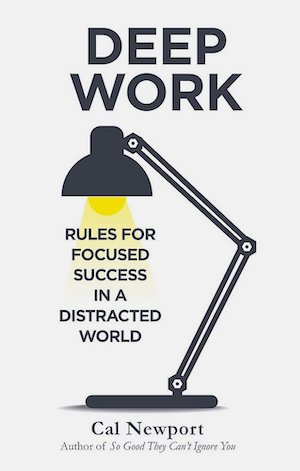
Deep Work was a book that I had been planning on reading for a long time. The book starts with a motivation about why deep work is valuable, rare and meaningful. In the second part, the author then talks about different ways of achieving deep work.
I found the book to be fairly opinionated. For example, in part of the book, the author advocates not using social media at all, which feels like an unnecessarily strong recommendation. Still, I found myself agreeing with a lot of the other ideas, and it was interesting to read about academic studies behind the various aspects of deep work.
The author also presented some interesting thoughts about why deep work is so rare. One of these, that I thought about a few times since reading the book, is about how we often only use our phone for a few moments to avoid boredom. When waiting in queues, for example, most of us look at our phones, even if we only have to wait for half a minute. By doing this, we are essentially conditioning ourselves to not be alone with our thoughts for even fairly short amounts of time.
Hedgehogging
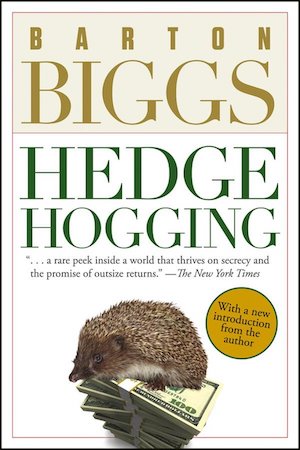
Barton Biggs majored in English but later decided to get into finance. His father and brother both worked at banks, and he wanted to be included in the dinner table conversations, so eventually he chose to also learn about it. During the course of his career, Biggs worked at one of the first hedge funds, then lead a major division at Morgan Stanley, and finally founded his own hedge fund.
However, during all of this, he also stayed true to his creative writing roots, and kept working on essays. Hedgehogging is a collection of these essays. All of them are somehow related to the world of hedge funds, some to the psychological aspects, others to how the business works.
I thought the book was an interesting read and a nice way to learn more about how the world of hedge funds works. It made me understand some parts of this world a lot better. I thought the psychological aspects were especially interesting, e.g. the parts that described what people are motivated by and under how much pressure to perform they are.
Measure What Matters
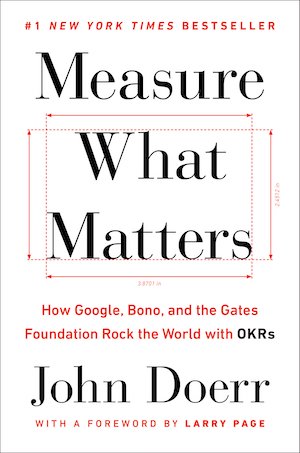
OKRs, objectives and key results, are a mechanism for planning what to work on. The author introduced them to Google roughly 20 years ago. Nowadays they are used by many organizations.
I started reading the book to learn more about OKRs, but it turned out that the book was less about how they work and more about stories of various companies that plan using OKRs. Each of them uses OKRs in slightly different ways and sometimes there is an interesting story on how that came to happen. The second half of the book then focuses on designing effective work environments.
The book is a fairly easy read and has some really nice quotes. However, while it was decently interesting, I would probably not read it again.
Flash Boys: A Wall Street Revolt
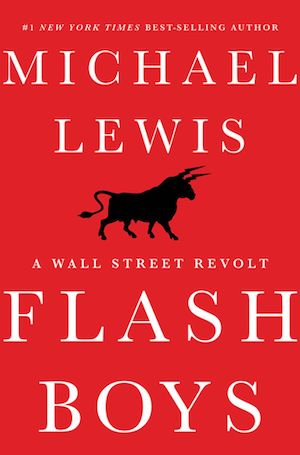
Flash Boys is a book about high-frequency trading (HFT). It follows a few people that, over the course of several years, discover how HFT works. I found it a fascinating read and would consider it to be my favorite book of the year. The stories are incredible and Michael Lewis’ way of telling them is superb.
HFT strategies themselves are pretty interesting and somewhat different to what I had imagined. The book also did a good job of explaining that many strategies were only made possible because of unintended side effects of introducing various, not perfectly thought-out, regulations.
My only criticism of the book would be that it is extremely opinionated. However, the stance of the author and characters on HFT seems to shift a bit towards the end.
Bad Blood: Secrets and Lies in a Silicon Valley Startup
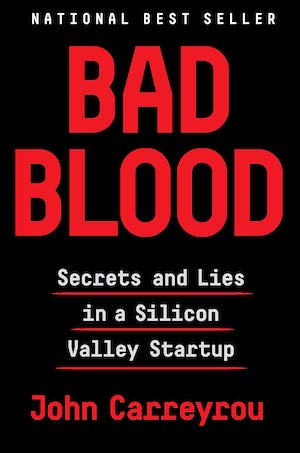
Theranos was a Silicon Valley startup working on blood tests, and was, at some point, valued at $10 billion. Its blood tests were supposed to show results instantaneously and should only require a drop of blood, much fewer than tests need nowadays. However, those tests never ended up working, even though the company secured tons of funding and actually sold their products at stores.
Bad Blood is the story behind the company. It follows various storylines over many years. Some talk about how the company developed during those years, others describe how people, for a long time, tried to convince the public that the tests did not work at all.
The book is a super interesting read. It is a thriller based on real life. There is now also a movie that is based on the book.
The thing that I probably found most interesting about the entire story is how a few people at the top of the company managed to trick everybody. A lot of the people working at Theranos were super smart and had PhDs from the best universities of their field. But still, they did not realize that the end product did not work at all, mostly because of the way communication between individual teams was extremely restricted. It is kind of strange to imagine that you are working on something for years and believe you are doing something good, even though in the end it does not amount to anything and you do not even know about that.
Looking back, I did succeed in reading more non-fiction books, as planned last year. I did also end up reading more on finance than I otherwise did. For next year, there’s some more similar books I plan on reading, inspired by what I enjoyed this year.